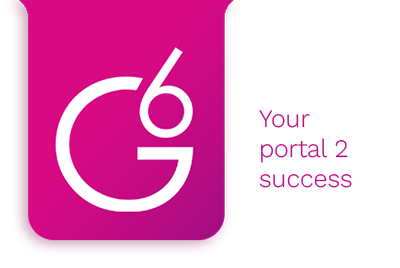Does your company spend considerable time, money, and energy chasing potential leads just for them to get cold feet?
Several small business owners waste their resources chasing unqualified leads because they don’t have the criteria to determine marketing qualified leads!
Hi, my name is AJ! I recently sold my business for multiple seven figures. Now, I assist other business owners in scaling their companies.
One detail that helped my business thrive was finding and nurturing successful leads!
If you want to learn how to do the same to give your business a competitive edge, keep reading!
Key Takeaways
A marketing qualified lead is someone your marketing team determines is a qualified lead.
Actions like engaging on social media, clicking email marketing ads, and requesting pricing indicate an MQL.
MQLs are different from sales qualified and sales accepted leads.
Marketing and sales reps must be on the same page regarding what determines high-quality leads.
Related Reading: Small Business CRM
SBB Featured Partners
A marketing qualified lead (MQL) is a lead your marketing team determines is likelier to become a paying customer compared to other prospects.
How do marketing teams make this decision?
Typically, teams define MQLs by specific criteria the business lays out.
For instance, some examples of criteria companies use to determine marketing qualified leads include the following:
Website pages visited Content offers clicked on CTAs clicked Social media posts interacted with
It’s crucial to pursue marketing leads aggressively, as they have the highest chance of converting into paying customers.
The critical difference between an MQL and a sales qualified lead (SQL) lies in their stage of the sales funnel.
For instance, an MQL is a potential buyer who has shown some level of engagement with your brand.
These individuals may have shown interest by taking any of the following actions:
Visiting your websiteClicking on your content offers Interacting with your social media posts (liking, sharing, or posting comments) Interacting with social media ads
These actions indicate an interest, making them prime for further marketing efforts.
On the other hand, sales qualified leads are not just engaged but have demonstrated a clear intent to purchase your product or service.
These consumers could have shown this interest through actions like:
Requesting a demoAsking detailed questions about your productFilling out a contact sales form
Your sales team should focus on sales qualified leads as they’re further down the funnel and, therefore, closer to converting into paying customers!
Sales accepted leads (SALs) are a step further in the sales funnel than marketing qualified leads.
So, while MQLs have shown an interest in your product or service, SALs are leads that the sales team has accepted as worthy of a direct sales follow-up.
What does a follow-up mean?
Following up means the sales team believes these leads could become customers, fit the target market, and have the potential to close the deal.
In contrast, MQLs are still in the nurturing stage by the marketing team and are not yet ready for direct sales contact.
Essentially, MQLs are leads that have shown potential, while SALs have been vetted and accepted by sales teams for further engagement!
After your marketing reps nurture an MQL, they’ll pass this individual to the sales team, who will determine if they’re ready for a sales pitch.
Here’s how the lead qualification process works.
It’s crucial to note that marketing and sales teams must be on the same page when qualifying leads for your company.
A lead starts by becoming a marketing qualified lead, given they meet the proper criteria.
Therefore, just because your company has acquired a lead, it doesn’t automatically make them an MQL.
Then, if the sales department agrees with the marketing team about the potential buyer, they become a sales accepted lead.
Finally, the lead becomes an SQL if they have shown intense interest in your company’s products or services.
The primary things that change an MQL to an SQL are marketing efforts and personalized communication because these engage the consumer and encourage them to buy!
Also, it’s critical to understand the importance of lead qualification.
Lead qualification standards mean your sales and marketing departments only pursue the prospects who are likely to convert into paying customers.
When companies fail to implement lead qualification techniques, it can lead to wasted effort and money (two things no business owner wants to deal with!).
How do companies determine marketing qualified leads from unqualified ones?
Here are three actions that signal you’re dealing with high-quality leads!
Website behavior includes visiting multiple pages on your website, especially high-intent pages like pricing or product details.
This behavior indicates a keen interest in your products or services.
Essentially, these actions show a potential buyer wants to learn more about your brand, its products or services, etc., before deciding to purchase something.
Therefore, these website visitors are likely to become MQLs.
If users download a content offer such as an eBook, an exclusive discount, or a case study, they are likely to consider your products or services.
This proactive step of seeking more information classifies this prospective customer as an MQL!
Lastly, there’s engaging with email marketing content.
Engagement with your emailed content, such as opening emails, clicking links, or responding to surveys, also signals interest.
As you can imagine, higher engagement rates with your email campaigns suggest the lead is more interested and, therefore, more likely to become an MQL.
Utilizing software for email marketing purposes is helpful because many tasks are automated.
As a result, you can allow the software to do the busy work (sending emails, collecting and analyzing the data, scheduling content) while you and your team formulate plans based on this activity!
The four steps to getting MQLs include the following:
Creating lead agents Gathering customer information Developing marketing materials for your leads Removing old leads from the sales process
Here’s what you need to know about each of these steps!
Creating a lead magnet starts with identifying the critical problems or needs of your target audience.
Then, you develop a resource that addresses those issues.
This resource could be any of the following things:
eBookWebinarFree trialBlog posts
These resources should be anything valuable enough to prompt potential leads to start their customer journey.
Once your resource is ready, promote it on your website, social media channels, and other marketing platforms to attract and convert visitors into quality leads.
Collecting customer information is pivotal in creating personalized marketing strategies that resonate with your target demographic.
This data provides insights into their behavior, preferences, and needs, enabling you to optimize your products, services, and overall customer experience!
Some examples of information that you can collect include the following:
Demographic data Name Addresses Job title Company size Pain Points
Learning about consumers facilitates lead nurturing, allowing your marketing and sales teams to guide potential customers smoothly through the buying cycle.
Using a customer relationship management (CRM) tool can help you keep track of this data and use it to your advantage.
Personalized marketing is crucial because it allows businesses to tailor their message to the recipient’s profile, needs, and preferences.
As a result, this leads to more effective communication.
Marketing to each lead individually enhances the customer experience, making individuals feel valued and understood and fostering brand loyalty.
Further, personalized content marketing can lead to the following things:
Higher engagement ratesBetter customer retentionIncreased sales
Cleaning old leads from your marketing funnel is an essential step in maintaining the efficiency and effectiveness of your sales and marketing efforts.
By removing stale or unresponsive leads, you refine your focus, ensuring your team invests the time and resources in prospects with genuine potential.
Also, this practice helps enhance the accuracy of your sales forecast, as your SQL leads only consist of engaged, high-quality leads.
Sometimes, it’s helpful to understand what an MQL is, NOT to really understand what it IS.
Therefore, here are two things an MQL is NOT.
An MQL is not a guarantee because it identifies a lead’s potential to become a customer based on their engagement with your marketing content.
However, an MQL doesn’t assure that the lead will move forward in the sales pipeline or eventually make a purchase.
Further, numerous factors may prevent an MQL from becoming a sales qualified lead (SQL).
Some of these factors include the following:
CompetitionBudget constraintsChanging needs
Therefore, while MQLs are significant in lead generation, they don’t promise conversion into actual customers.
An MQL is not a regular lead because the marketing team has determined it as being more likely to become a customer compared to other potential buyers.
Teams base this determination on the lead’s engagement with the company’s marketing efforts and their fit with its ideal customer profile.
Unlike a regular lead, which might have just shown a basic interest, an MQL has taken actions that indicate interest in becoming a customer.
Therefore, MQLs are a more highly targeted group, requiring personalized communication to guide them further down the sales funnel.
Sometimes, it’s helpful to see examples of MQLs to understand them better.
Therefore, I’ve listed four examples of what a marketing qualified lead might look like for your business!
The Engaged Website Visitor
An engaged website visitor is an individual who visits your website frequently.
While visiting your awesome website, they’re exploring various pages, especially high-intent ones like pricing or product details.
On top of that, they might have filled out a form on your site, providing you with their contact information.
As you can see, these actions show a clear interest in your product or service!
The Content Consumer
A content consumer prospect regularly downloads or engages with your content.
Some examples of actions a content consumer might take include the following:
Reading case studies Commenting on social media posts Reading blog posts
Their willingness to exchange contact information for valuable resources indicates a deeper interest in learning about your products or services, making them an MQL!
The Active Email Subscriber
This person opens your marketing emails, clicks on links within these emails, and perhaps even responds to surveys or feedback requests.
Their engagement with your email content signals a high-interest level.
Email marketing is an excellent strategy to teach this lead more about your company’s mission, the story behind its products, and why your products are superior!
The Webinar Attendee
This potential customer signs up for and attends your webinars.
The time commitment involved in attending webinars suggests that they are seriously considering your products.
Therefore, this potential buyer is an MQL.
Remember, while these examples showcase high engagement with your content, they are still just potential customers.
The aim is to convert these MQLs into SQLs (Sales Qualified Leads) and, eventually, into loyal customers.
Marketing qualified leads are potential buyers your marketing department determines are highly likely to purchase your products.
Remember, these leads differ from the sales leads (SQL and SAL).
Still, MQL success relies on personalized engagement, an accurate lead scoring system, and inter-departmental collaboration!
Now that you understand what MQLs are, it’s time to utilize your marketing assets to find your own!
Good luck conducting your own research to create content that resonates with your target audience.
The post What is a Marketing Qualified Lead (MQL)? Ultimate Guide appeared first on Small Business Bonfire.
—
Blog powered by G6
Disclaimer! A guest author has made this post. G6 has not checked the post. its content and attachments and under no circumstances will G6 be held responsible or liable in any way for any claims, damages, losses, expenses, costs or liabilities whatsoever (including, without limitation, any direct or indirect damages for loss of profits, business interruption or loss of information) resulting or arising directly or indirectly from your use of or inability to use this website or any websites linked to it, or from your reliance on the information and material on this website, even if the G6 has been advised of the possibility of such damages in advance.
For any inquiries, please contact [email protected]




